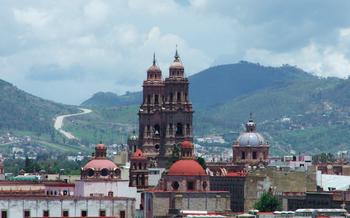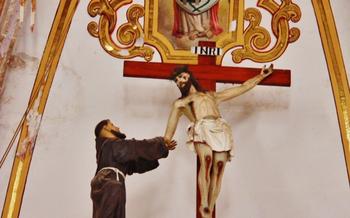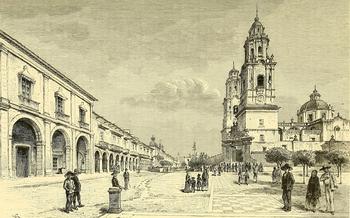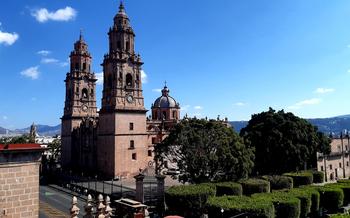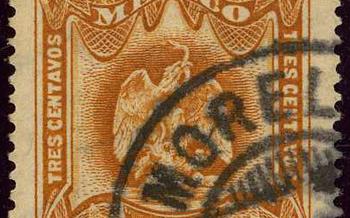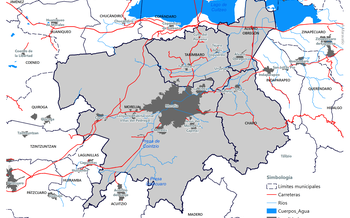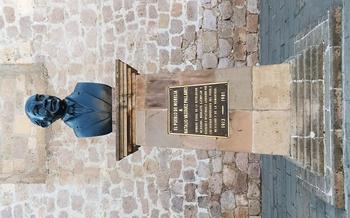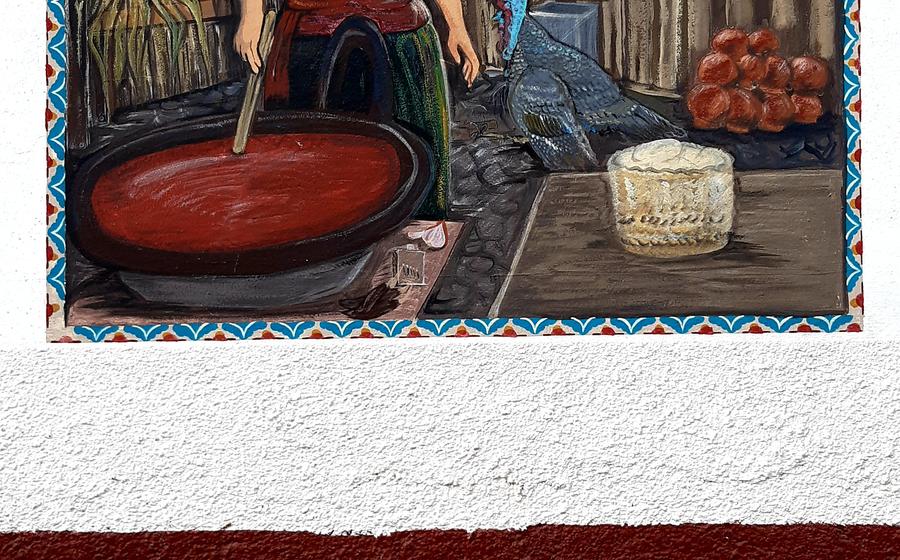
Reserva de la Biosfera de la Mariposa Monarca
- Reserva de la Biosfera de la Mariposa Monarca
- How to Get to the Reserve
- Entrance Fees and Hours of Operation
- Where to Stay Near the Reserve
- What to See and Do in the Reserve
- The Science Behind the Monarch Migration
- The Cultural Importance of the Monarch Butterfly
- The Threats Facing the Monarch Butterfly
- The Future of the Monarch Butterfly
- Personal Experience Visiting the Reserve
- Local Cuisine and Restaurants
- Other Things to Do in the Area
- Safety Tips for Visitors
- Insider Tip: The Best Way to Experience the Reserve
Reserva de la Biosfera de la Mariposa Monarca
Established in 1986, the Reserva de la Biosfera de la Mariposa Monarca protects one of the world's most spectacular natural phenomena: the annual migration of millions of monarch butterflies from the United States and Canada to Mexico. Monarchs travel thousands of miles to escape the cold northern winters and find warm, humid conditions that support their reproduction. The reserve, which is located in the mountains of central Mexico, protects the forest ecosystems that provide the butterflies with food and shelter.
Importance of the Reserve:
The Reserva de la Biosfera de la Mariposa Monarca is a UNESCO World Heritage Site, an important natural sanctuary and a critical site for the survival of the monarch butterfly. The reserve is home to a diverse array of flora and fauna, including over 1,200 species of plants and animals. The reserve also provides important ecosystem services, such as water filtration and carbon sequestration.
Location of the Reserve:
The Reserva de la Biosfera de la Mariposa Monarca is located in the states of Michoacán and México, approximately 100 miles northwest of Mexico City. The reserve covers an area of over 130,000 acres and encompasses a variety of habitats, from forests to meadows to wetlands.
Best Time to Visit the Reserve:
The best time to visit the Reserva de la Biosfera de la Mariposa Monarca is during the monarch butterfly migration, which takes place from November to March. During this time, the reserve is alive with the sight and sound of millions of monarchs as they flutter through the trees and settle on the ground to feed and rest.
How to Get to the Reserve
Transportation Options
There are a few different ways to get to the Reserva de la Biosfera de la Mariposa Monarca. The most convenient option is to drive, as the reserve is located about 100 miles (160 kilometers) from Mexico City. If you don't have a car, you can take a bus from Mexico City to Morelia, and then take a taxi or colectivo (shared van) to the reserve.
Driving Directions
To drive to the reserve, take Highway 15D west from Mexico City. After about 100 miles, you will see a sign for the reserve on your left. Turn left onto this road and follow it for about 10 miles (16 kilometers) to the reserve entrance.
Public Transportation
To take public transportation to the reserve, take a bus from Mexico City to Morelia. The bus ride takes about 4 hours. Once you arrive in Morelia, you can take a taxi or colectivo to the reserve. The taxi ride takes about 1 hour, and the colectivo ride takes about 5 hours.
Cost of Transportation
The cost of transportation to the reserve varies depending on the mode of transportation. If you are driving, the cost of gas will be the main expense. The cost of a bus ticket from Mexico City to Morelia is about $20. The cost of a taxi or colectivo from Morelia to the reserve is about $30.
Entrance Fees and Hours of Operation
Visiting the Reserva de la Biosfera de la Mariposa Monarca is a budget-friendly experience. The entrance fee is minimal, allowing everyone to enjoy the beauty of the reserve without breaking the bank. The hours of operation are also flexible, enabling visitors to plan their trip according to their schedule.
Guided tours are available for those who want to learn more about the reserve and its inhabitants. These tours are led by knowledgeable guides who can provide insights into the life cycle of the monarch butterfly and the importance of the reserve for its survival.
Discount rates are offered for students, children, and seniors, making it even more accessible for everyone to experience the wonder of the monarch butterfly migration.
Where to Stay Near the Reserve
Hotel Options
Morelia is home to a variety of hotels to suit all budgets. For a luxurious stay, consider the Hotel Casa Grande or the Hotel de la Soledad. These hotels offer stunning views of the city and are within walking distance of many of Morelia's attractions.
For a more affordable option, the Hotel Posada de la Rose or the Hotel La Mansion are both great choices. These hotels are located in the historic center of Morelia and offer comfortable rooms at a reasonable price.
Airbnb Rentals
Airbnb is a great option for travelers who want to experience the local culture and live like a local. There are a variety of Airbnb rentals available in Morelia, ranging from private rooms to entire apartments.
Hostels
Hostels are a great option for budget travelers who are looking to meet other people and share costs. There are a few hostels in Morelia, such as the Hostel Casa del Sol or the Hostel La Luna.
Camping Facilities
There are a few campgrounds located near the Reserva de la Biosfera de la Mariposa Monarca. This is a great option for travelers who want to be close to nature and experience the reserve in a unique way.
No matter where you choose to stay, be sure to book your accommodation in advance, especially if you are traveling during the peak season (November-February).
What to See and Do in the Reserve
The Reserva de la Biosfera de la Mariposa Monarca is home to a variety of activities and attractions, all centered around the monarch butterfly migration.
Monarch butterfly migration
The main attraction of the reserve is, of course, the monarch butterfly migration. Each year, millions of monarch butterflies migrate to the reserve from as far away as Canada and the United States. The butterflies arrive in the reserve in late October and early November, and they stay until March or April. During this time, the butterflies can be seen in huge numbers, fluttering through the trees and congregating on the oyamel fir trees.
Hiking trails
The reserve offers a variety of hiking trails that allow visitors to get up close and personal with the monarch butterflies. The trails range in difficulty from easy to challenging, and they offer stunning views of the surrounding mountains and forests.
Birdwatching
The reserve is also home to a variety of bird species, including hummingbirds, warblers, and flycatchers. Birdwatching is a popular activity in the reserve, and there are a number of birdwatching trails that visitors can follow.
Photography opportunities
The reserve is a photographer's paradise, with endless opportunities to capture stunning images of the monarch butterflies and the surrounding scenery. The best time to take photos is early in the morning or late in the afternoon, when the light is soft and the butterflies are most active.
The Science Behind the Monarch Migration
The monarch butterfly's migration is one of the most extraordinary natural phenomena in the world. It has inspired awe and wonder for centuries, and scientists continue to be fascinated by its complexity and precision.
Why Do Monarchs Migrate?
Monarchs migrate to find a more favorable climate for overwintering. In the fall, the days get shorter and the temperatures start to drop in North America, so the monarchs head south to warmer climates in Mexico and Central America. In the spring, they make the long journey back north to lay their eggs and start the next generation.
How Do Monarchs Navigate?
Monarchs use a combination of cues to navigate their long migration, including the sun's position, the Earth's magnetic field, and landmarks on the ground. They are able to travel hundreds of miles each day, and they can even make course corrections if they get off track.
How Long Does the Migration Take?
The monarch migration takes about two months each way. The journey is especially challenging for the butterflies that travel the longest distances, such as those that migrate from Canada to Mexico.
The Importance of the Reserve for the Migration
The Reserva de la Biosfera de la Mariposa Monarca is a vital part of the monarch migration. It provides a safe haven for the butterflies to overwinter, and it is one of the few places where they can find the food and water they need to survive. Without the reserve, the monarch migration would be in jeopardy.
The Cultural Importance of the Monarch Butterfly
The monarch butterfly holds a significant place in Mexican culture, embodying both spiritual and ecological reverence. Indigenous communities, particularly the Purépecha people, view the monarchs as the souls of their ancestors returning to visit them each year. This belief has been passed down through generations, fostering a deep respect for the butterflies and their annual migration.
In traditional Mexican medicine, the monarch butterfly is believed to possess healing properties. Its wings are often used as ingredients in herbal remedies for various ailments, including stomachaches, headaches, and skin conditions. The vibrant colors of the butterfly are also said to bring good luck and ward off negative energy.
The monarch butterfly's symbolism extends into the realm of art and literature. It has been depicted in countless paintings, sculptures, and murals throughout Mexico, serving as a symbol of beauty, transformation, and hope. In Mexican literature, the butterfly frequently appears as a metaphor for the journey of life, representing the challenges, triumphs, and ultimate metamorphosis that each individual experiences.
The Threats Facing the Monarch Butterfly
The monarch butterfly is facing a number of threats to its survival, including habitat loss, climate change, and pesticides.
Habitat Loss: The biggest threat to the monarch butterfly is habitat loss. As human populations grow, so does the need for land for development. This has led to the destruction of large areas of the monarch's wintering grounds in Mexico.
Climate Change: Climate change is also a major threat to the monarch butterfly. The warming climate is causing the monarchs' wintering grounds in Mexico to become too warm, forcing them to move to new areas. The monarchs are also being affected by changes in precipitation patterns, which can lead to flooding and droughts.
Pesticides: Pesticides are another major threat to the monarch butterfly. The monarchs are exposed to pesticides when they feed on milkweed plants that have been treated with herbicides. Pesticides can kill the monarchs directly, or they can make them more susceptible to disease.
Conservation Efforts: There are a number of conservation efforts underway to help the monarch butterfly. These efforts include:
- Protecting the monarchs' wintering grounds in Mexico
- Creating new habitats for the monarchs
- Reducing the use of pesticides
- Educating the public about the importance of the monarch butterfly
These efforts are essential to ensuring the survival of the monarch butterfly.
The Future of the Monarch Butterfly
The monarch butterfly faces an uncertain future. Habitat loss, climate change, and pesticides threaten its survival. Conservation efforts are underway to protect the monarch butterfly and its habitat. The Reserva de la Biosfera de la Mariposa Monarca is a critical part of these efforts. The reserve provides a safe place for the monarch butterflies to migrate and reproduce. It also helps to raise awareness of the importance of the monarch butterfly and its conservation.
The importance of protecting the monarch butterfly
The monarch butterfly is an iconic species. It is known for its beautiful wings and its incredible migration. The monarch butterfly is also an important pollinator. It helps to pollinate plants, which are essential for food production. The monarch butterfly is also a symbol of hope and resilience. It reminds us that even the smallest creatures can make a big difference.
The role of the Reserva de la Biosfera de la Mariposa Monarca
The Reserva de la Biosfera de la Mariposa Monarca is a critical part of the effort to protect the monarch butterfly. The reserve provides a safe place for the monarch butterflies to migrate and reproduce. It also helps to raise awareness of the importance of the monarch butterfly and its conservation.
How you can help the monarch butterfly
There are many things you can do to help the monarch butterfly. You can reduce your use of pesticides, plant native plants, and support organizations that are working to protect the monarch butterfly. You can also visit the Reserva de la Biosfera de la Mariposa Monarca and learn more about the monarch butterfly and its conservation.
Personal Experience Visiting the Reserve
My first impressions of the Reserva de la Biosfera de la Mariposa Monarca were awe and wonder. I had never seen so many butterflies in my life! The air was alive with their fluttering wings, and the sound of their collective movement was like a gentle breeze. I spent hours wandering through the forest, marveling at the beauty of these delicate creatures.
One of my favorite moments in the reserve was when I came across a clearing filled with hundreds of butterflies. They were all gathered around a small pool of water, drinking and bathing. I sat down on a rock and watched them for a long time, mesmerized by their grace and beauty.
Overall, my experience visiting the Reserva de la Biosfera de la Mariposa Monarca was unforgettable. It was a once-in-a-lifetime opportunity to witness one of the most amazing natural phenomena on Earth. I highly recommend it to anyone who has the chance to visit.
Local Cuisine and Restaurants
While visiting the Reserva de la Biosfera de la Mariposa Monarca, be sure to sample the delicious local cuisine. Traditional Mexican dishes, such as tacos, enchiladas, and pozole, are widely available in the area. Several popular restaurants in the area offer a variety of traditional Mexican dishes, as well as international cuisine.
La Casa de la Mariposa, located in the heart of the reserve, is a popular restaurant serving traditional Mexican dishes made with fresh, local ingredients. El Mirador, situated on a hilltop overlooking the reserve, offers stunning views of the surrounding countryside along with a menu of Mexican and international dishes.
For those looking to purchase souvenirs, there are several local markets and artesanía shops in the area. These markets offer a variety of handmade crafts, textiles, and other souvenirs, all made by local artisans.
Insider Tip: Be sure to try the local specialty, chongos zamoranos, a sweet tamale made with fresh fruit and spices.
Other Things to Do in the Area
In addition to visiting the Reserva de la Biosfera de la Mariposa Monarca, there are many other things to see and do in the area.
Visit the city of Morelia. Morelia is the capital of the state of Michoacán and a UNESCO World Heritage Site. The city is home to a number of beautiful colonial-era buildings, including the Morelia Cathedral, the Templo de San Francisco, and the Palacio de Gobierno. Visitors can also enjoy the city's many museums, art galleries, and restaurants.
Explore the surrounding countryside. The area around Morelia is home to a number of beautiful natural attractions, including the Monarch Butterfly Biosphere Reserve, the El Rosario Monarch Butterfly Sanctuary, the Mil Cumbres National Park, and the Laguna de Zacapu. Visitors can explore these areas by hiking, biking, horseback riding, or ATV.
Attend a traditional Mexican festival. Morelia and the surrounding area are home to a number of traditional Mexican festivals throughout the year. These festivals offer a great opportunity to experience the local culture and traditions. Some of the most popular festivals include the Festival Internacional de Cine de Morelia, the Festival de Música de Morelia, and the Feria de San José.
Visit nearby archaeological sites. The area around Morelia is home to a number of important archaeological sites, including the ancient city of Teotihuacan, the pyramids of Tzintzuntzan, and the ruins of Chichén Itzá. Visitors can explore these sites and learn about the rich history of the region.
Safety Tips for Visitors
While Mexico is generally a safe country for travelers, there are certain precautions you should take to ensure your safety. In the Reserva de la Biosfera de la Mariposa Monarca, the biggest safety concern is petty theft. To avoid becoming a target, keep your valuables secure and be aware of your surroundings. It's also a good idea to avoid hiking alone, especially if you're a woman.
There are a few common scams to be aware of in the area. One is the "friendship bracelet" scam, where someone will approach you and offer to make you a bracelet as a gift. Once the bracelet is finished, they will demand payment, often for an inflated price. Another scam is the "taxi scam," where a taxi driver will take you to a different destination than you requested and then overcharge you. To avoid these scams, be firm and assertive, and don't be afraid to walk away if you feel uncomfortable.
If you do have an emergency, there are several ways to get help. You can call the local police at 911, or you can contact your hotel or tour operator. There is also a hospital located in the town of Angangueo, about 30 minutes from the reserve.
By following these safety tips, you can help ensure that your trip to the Reserva de la Biosfera de la Mariposa Monarca is a safe and enjoyable one.
Insider Tip: The Best Way to Experience the Reserve
To fully immerse yourself in the beauty and wonder of the Reserva de la Biosfera de la Mariposa Monarca, it's essential to embrace the local culture and traditions. One of the best ways to do this is to visit the reserve during the annual Monarch Butterfly Festival, held every year from late October to early November. This vibrant festival offers a unique opportunity to learn about the monarch butterfly, its migration, and its cultural significance through various events, workshops, and exhibitions.
During the festival, you can witness the breathtaking spectacle of millions of monarch butterflies fluttering their wings in unison, creating a mesmerizing kaleidoscope of color. You'll also have the chance to interact with local artisans, sample traditional Mexican cuisine, and participate in traditional dances and rituals. The festival is a true celebration of the monarch butterfly and its vital role in the local ecosystem and culture.
Remember, the best time to visit the reserve is during the winter months, when the monarch butterflies are present. To fully experience the migration, plan your trip between November and March. Make sure to wear comfortable shoes and clothing, bring a camera to capture the stunning scenery, and be respectful of the wildlife. Stay on the designated trails to minimize your impact on the environment.
By following these insider tips, you'll have an unforgettable experience at the Reserva de la Biosfera de la Mariposa Monarca, creating memories that will last a lifetime.

